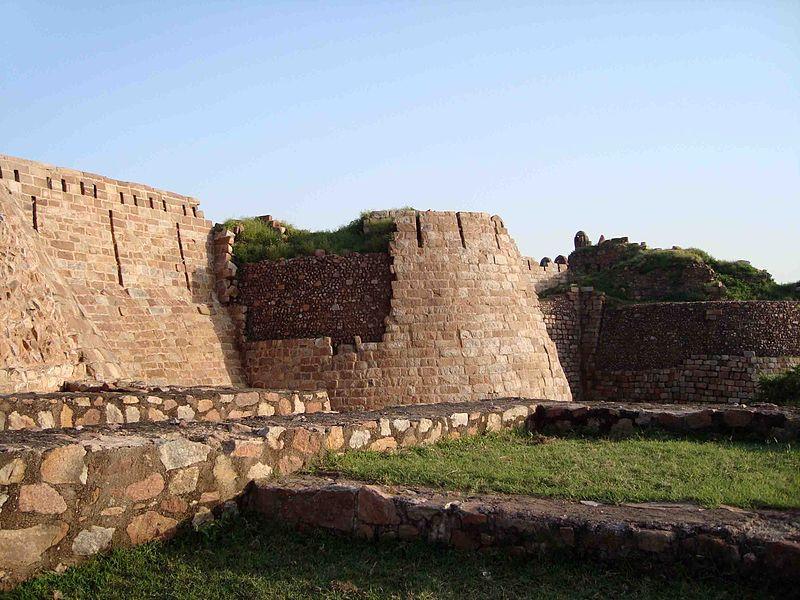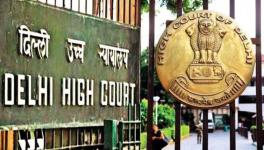‘ASI Protects None, Neither Monuments Nor People in Tughlaqabad’
of Bharatiya Janata Party (BJP) MP Ramesh Bidhuri. None of those buildings seems to have been earmarked for demolition,” said Sucheta De.

Tughlaqabad Fort. Image Courtesy: Wikimedia Commons
The lanes of Tughlakabad village are a deserted sight now. As one moves inwards, anxious eyes follow strangers with the singular
question: are you from the Archaeological Survey of India? The residents of the village are expecting imminent demolition of their
houses after the ASI asked them to vacate the land following a Supreme Court order. The residents, mostly migrant worker families from Uttar Pradesh, Bihar, Jharkhand, and West Bengal fear that the demolition will not only make them roofless in this biting cold but also break the crucial link to their workplaces.
Rajesh, who came from Bihar in 1996 to find work in the national capital, said that he bought the plot in Tughlaqabad from another
person knowing little about the legality of the title. He maintained that thousands of families bought plots from local dealers and paid them their hard-earned money. Yet, nobody is turning up to help them in this critical hour.
“I worked in a local garment factory in Okhla. The order from ASI suggests that all homes within a radius of 100 metres from the walls of Tughlaqabad fort will be demolished. I put my hard-earned money into this house. My entire family lives here and if somebody breaks it, I cannot build another again. We suffered a lot in the pandemic and lockdowns. Now, we run a local grocery store for our livelihood,” said Rajesh.
The order for demolition by the Archaeological Survey of India is rooted in the long legal battle that began in 2001 when petitioner S N Bharadwaj approached the Delhi High Court saying that historic Tughlaqabad fort should be saved from illegal encroachment from land mafia grabbing precious land adjacent to the walls of the fort. The apprehensions of the fort losing its existence were grounded in administrative apathy and land grabbing which already affected Qila Rai Pithora and Siri Fort. Noted Historian William Dalrymple cites in his book City of Djinns that the Municipal Corporation of Delhi demolished the outer walls of Qila Rai Pithora for broadening of the road without understanding its historical significance. The structure remains the last surviving building from the pre-Islamic era in Delhi.
Issuing a notice to ASI, the High Court disposed of the matter. Following no action, Bharadwaj approached the Supreme Court in 2006 to seek remedy. He maintained that Delhi Development Authority had transferred 4435 Bigha land to ASI for maintaining and preserving the monument. However, all parties kept ignoring the land grabbing. After considering the facts, the Supreme Court asked ASI to conduct an aerial and physical survey to determine the extent of the illegal land grab. ASI maintained that its officials faced threats and needed police protection to carry out the eviction. After two decades of legal battle, the ASI has given time to residents till January 26 to vacate their homes so that demolition can be carried out.
Laxman, a resident of Chhuria Mohalla in Tughlaqabad village told NewsClick over the phone that he allegedly paid Rs 3,40,000 to the corrupt officials of the Archaeological Survey of India who assured him that there would not be any demolition inside the inner walls of the fort. He said, “I worked as a driver to support my family. I received the notice on January 11 and I have been running from pillar to post to save my home. Amid this crisis, I lost my job too. I have three children and three of them will appear for examinations in February and March. Their studies for the entire year will go down the drain. If my children cannot get literate, then what’s the use of my existence? ASI officials came to us and assured us that there would not be any demolition. I paid them money in instalments to secure a roof for my children. Now, I am left with no choice.”
The notice by ASI pasted on the walls of the colony read that there would be no new construction post-1993 and all such construction should be removed. If the occupants fail to vacate at their own expense, then the survey office would recover the costs of demolishing such constructions.
A restless Laxman further explained that most of the working families go to plush colonies in Okhla, Greater Kailash, and Nehru Place for odd jobs and the demolition will further deprive them of employment opportunities too. “In this biting cold, where will we go? Neither the Delhi government nor the central government announced that they will provide any rehabilitation,” he said.
Sucheta De from All India Central Council of Trade Unions – who has been organising workers in South Delhi – highlights that ASI notice to residents does not portray the bigger picture. She said, “As per the November 24 order, the necessary survey – which will ascertain the legality of each household – is yet to be completed, and hence the notice is uncalled for. Besides, the demolition notice makes no mention of rehabilitation. The ASI has told the court that its survey has not been completed for “reasons beyond control” and listed “unrest” as one of the prime reasons. The ASI is hiding some key facts. We found that the 100-metre radius contains a government school and dispensary as well as houses of Bharatiya Janata Party (BJP) MP Ramesh Bidhuri. None of those buildings seems to have been earmarked for demolition. The presence of these buildings is another reason why the ASI is reluctant to complete the survey.”
She added, “We also take strong objection to the repeated use of the term “encroachers” to describe the residents. The residents are mostly workers who migrated from Bihar, Bengal, and Nepal over the last three decades and bought land in the area from local landowners to satisfy the basic necessity of housing. They are mostly domestic workers, construction workers, and daily wagers, who not only earn their living in the city but also keep the urban economy running. If the state refuses to accept its duty to provide housing for all, low-cost private housing is the only way in which workers can find a roof over their heads.”
Nirmal Gorana, convenor of Mazdoor Awas Sangharsh Committee, told NewsClick over the phone that the Tughlaqabad episode is the sheer repetition of Khori village demolitions where authorities for decades turned a blind eye to the illegal land grab and demolished homes evicting up to 1 lakh people. Yet, there was no action against people who illegally sold land to poor workers.
He said, “The authorities like ASI were ignorant about land grabs. Why could a government department with so many resources not prevent this land grabbing? Did they file a single police complaint against people that occupied the government land? It means that the corrupt officials of ASI were involved in plotting. Until and unless there is no right to guaranteed housing, Khori and Tughlaqabad will keep happening. In this biting cold, they will be uprooted without any provision for rehabilitation. Forget about it, the government will not arrange for even two rotis for the night. Ideally, the Delhi government should announce rehabilitation, but they have kept mum.”
Meanwhile taking suo motu cognisance of proposed evictions, the Delhi Commission for Protection of Child Rights directed ASI Delhi circle to rehabilitate children before any eviction on Thursday. The notice read, “It is pertinent to mention that the order suffers from several infirmities. It speaks of no attempt or provision of rehabilitation of children. Taking away shelter from these families is nothing short of cruelty in such extreme weather of Delhi. Further, the children have their education which will suffer on account of this removal drive. It is tragic that the Archaeological Survey is not concerned about the well-being of the children.”
Get the latest reports & analysis with people's perspective on Protests, movements & deep analytical videos, discussions of the current affairs in your Telegram app. Subscribe to NewsClick's Telegram channel & get Real-Time updates on stories, as they get published on our website.
























